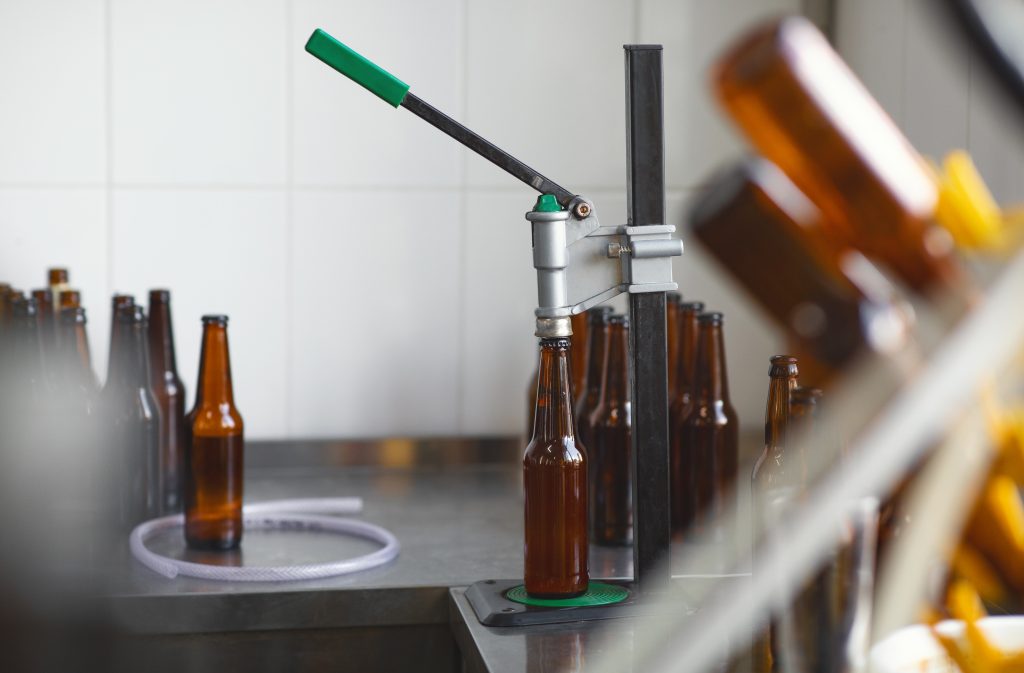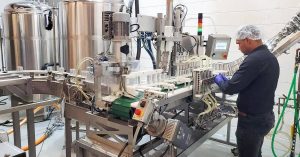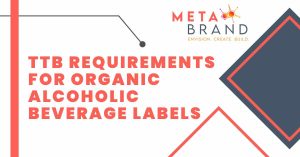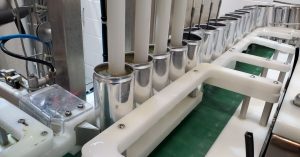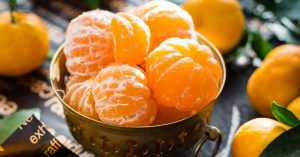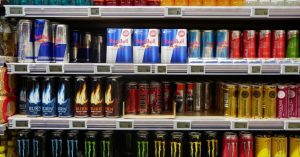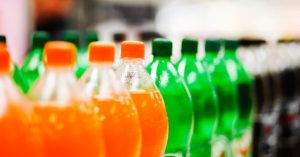Key Highlights
- The beverage industry is constantly evolving, driven by changing consumer preferences and emerging trends.
- Successful beverage development requires a delicate balance of flavor, functionality, and regulatory compliance.
- Leveraging technology, such as AI and advanced production techniques, is crucial for gaining a competitive edge.
- Effective market entry entails identifying your target audience and crafting a compelling brand story that resonates with consumers.
- Understanding the regulatory landscape, particularly FDA guidelines and labeling laws, is essential for a smooth launch.
Introduction
The beverage industry is a dynamic and competitive landscape, with consumers constantly seeking new and innovative products. Launching a new beverage requires a comprehensive understanding of the development process, from formulation to marketing and distribution.
This blog post will explore innovative strategies for beverage development success, focusing on key considerations for navigating this exciting and ever-changing market.
The Evolution of Beverage Development

The beverage industry has undergone significant transformations over the years, driven by evolving consumer preferences, technological advancements, and a growing awareness of health and wellness. Early on, beverage development primarily focused on taste and affordability.
However, in recent decades, there has been a notable shift toward products that not only quench thirst but also offer functional benefits and align with healthier lifestyles. This evolution has led to a surge in beverages incorporating natural ingredients, low-calorie sweeteners, and functional additives.
Tracing the Shift Towards Health-Conscious Formulations
As consumers have become increasingly health conscious, the demand for beverages that support well-being has skyrocketed. Health-conscious formulations often prioritize natural ingredients and minimize the use of artificial sweeteners, colors, and preservatives.
Some key beverage trends driving this shift include:
- Increased demand for beverages with functional benefits, such as improved gut health, boosted immunity, and enhanced cognitive function.
- Growing popularity of plant-based beverages, including almond milk, soy milk, and oat milk, driven by dietary preferences and sustainability concerns.
- A preference for low-sugar and sugar-free options to align with weight management and overall health goals.
The Rise of Functional Beverages in the U.S. Market
The U.S. market has witnessed a surge in the popularity of functional beverages, catering to consumers seeking specific health benefits. Energy drinks, for example, have gained widespread appeal, particularly among younger demographics seeking a quick boost in energy and focus.
Sports drinks, designed to replenish electrolytes lost during physical activity, have also gained a strong foothold in the market. These beverages often contain added minerals and vitamins to support athletic performance and recovery.
Furthermore, the functional beverage category extends beyond energy and sports drinks to encompass a wide range of products, such as enhanced waters, kombucha, and probiotic-rich beverages.
Key Components of a Successful Beverage Formula
Crafting a successful beverage formula requires a delicate balance of taste, functionality, and production feasibility. It’s not enough for a beverage to simply taste good; it also needs to meet consumer expectations for health, convenience, and overall value.
Collaborating with experienced beverage formulation experts, including flavor chemists, can significantly enhance the development process, ensuring that the final product not only meets but exceeds market demands.
Balancing Flavor and Functionality
Achieving a harmonious balance between flavor and functionality is paramount in beverage formulation. Consumers today are not willing to compromise on taste, even when seeking health benefits. Flavor chemists play a crucial role in this process, skillfully combining ingredients to create a beverage that is both delicious and delivers on its functional promises.
This involves understanding how different flavors interact with each other and with functional ingredients to ensure a synergistic and enjoyable sensory experience. Achieving the right balance requires careful consideration of the target audience, market trends, and the desired product positioning.
Importance of Selecting the Right Ingredients
The selection of ingredients is crucial in determining a beverage’s taste, functionality, and overall quality. Ingredient availability, cost, and sourcing ethics are key factors to consider.
Consumers increasingly demand natural ingredients, prompting beverage formulation experts to explore innovative ways to incorporate fruits, vegetables, herbs, and botanicals into their creations.
Sustainability concerns also play a significant role in ingredient choices, with a growing emphasis on sourcing ethically and minimizing environmental impact. Partnering with reputable suppliers and ensuring ingredient traceability are essential for building consumer trust and ensuring product quality.
Navigating the Beverage Industry’s Regulatory Landscape
Navigating the beverage industry’s regulatory landscape involves ensuring compliance with strict guidelines to bring new beverages to market successfully. Regulatory compliance is critical for beverage formulation, manufacturing, and packaging.
To meet standards, it’s vital to work with beverage development services, beverage formulation experts, and legal experts. Understanding the regulatory requirements at every step of the way is crucial to avoid delays and non-compliance issues.
Open communication, meticulous attention to detail, and knowledge of industry regulations are key to navigating this complex landscape.
Understanding FDA Guidelines for Beverages
The FDA’s guidelines for beverages cover a wide range of aspects, including ingredient safety, labeling requirements, and manufacturing practices. Beverage developers need to familiarize themselves with the FDA’s definition of different beverage categories, such as juices, sodas, and alcoholic beverages, as each category has specific regulations.
For instance, alcoholic beverages fall under the purview of the Alcohol and Tobacco Tax and Trade Bureau (TTB) in addition to the FDA. Compliance with labeling regulations is critical, as labels must accurately reflect the ingredients, nutritional content, and any health claims made about the beverage.
Labeling Laws and Health Claims
Labeling laws are designed to protect consumers from misleading information and ensure that they can make informed choices about the beverages they consume. Health claims, in particular, are subject to strict scrutiny.
Beverage companies must be able to substantiate any health claims they make with scientific evidence and obtain prior authorization from the FDA before marketing products with such claims. The following table summarizes key labeling requirements for beverages in the U.S.:
| Element | Description |
| Statement of Identity | The name of the product, prominently displayed |
| Net Contents | The amount of beverage in the container |
| Ingredient List | All ingredients listed in descending order of predominance by weight. |
| Nutrition Facts Panel | Provides information on serving size, calories, and key nutrients |
| Allergen Statement | Clearly identifies the presence of common allergens |
| Name and Address of Manufacturer | Contact information for the manufacturer, packer, or distributor |
Leveraging Technology in Beverage Innovation
Technology is revolutionizing the beverage industry, offering innovative solutions for product development, production, and marketing. Artificial Intelligence (AI), in particular, is transforming the way beverages are formulated, flavors are developed, and consumer preferences are analyzed.
Advanced production technologies, such as high-speed bottling and canning lines, enable manufacturers to scale up production efficiently while maintaining consistent product quality.
The Role of AI and Machine Learning
Artificial intelligence (AI) and machine learning (ML) are rapidly changing the beverage landscape, providing companies with powerful insights to optimize their products and processes. AI algorithms can analyze massive datasets of consumer preferences, market trends, and ingredient information to identify potential gaps in the market and predict future demand.
This data-driven approach enables beverage companies to make more informed decisions about product development, ensuring that new launches are aligned with consumer desires.
Moreover, AI can assist in optimizing production processes, improving efficiency, reducing waste, and ensuring consistent quality control. By embracing AI and ML, beverage companies can gain a significant competitive advantage in a rapidly evolving market.
Advances in Production and Packaging Technologies
Production and packaging technologies have also advanced significantly, leading to increased efficiency, reduced environmental impact, and enhanced product shelf life. High-speed bottling and canning lines can now fill thousands of containers per hour while maintaining precise fill volumes and minimizing product waste.
Packaging innovations, such as lightweight aluminum cans and recyclable pouches, contribute to sustainability efforts while preserving product freshness and extending shelf life. These advancements not only benefit manufacturers but also appeal to environmentally conscious consumers.
By adopting cutting-edge production and packaging technologies, beverage companies can enhance operational efficiency, reduce their environmental footprint, and meet the evolving demands of consumers.
Strategies for Effective Market Entry

Successfully launching a new beverage requires a well-defined market entry strategy that considers the target audience, competitive landscape, and brand positioning. Identifying the ideal target demographic is paramount.
Thorough market research, including consumer surveys, focus groups, and trend analysis, can provide valuable insights into consumer preferences, purchase behaviors, and unmet needs. This information is crucial for developing a product that resonates with the intended audience and carving out a unique space in the market.
Identifying Your Target Demographic
Identifying and understanding your target audience is crucial for building a successful beverage business. Who are you making this drink for? What are their demographics, lifestyle choices, and purchase behaviors? Understanding your target audience’s needs, preferences, and motivations allows you to tailor your product, branding, and marketing efforts to resonate with them effectively.
For example, a new sports drink might target athletes, fitness enthusiasts, or health-conscious individuals. Market research can provide insights into their preferred flavors, functional ingredients, and packaging preferences. This information allows for developing a product and marketing strategy that directly speaks to the specific needs and desires of the target demographic.
Crafting a Compelling Brand Story
In today’s saturated beverage market, a compelling brand story can be a powerful differentiator, capturing consumer attention and fostering brand loyalty. Your brand story is more than just your logo and tagline; it’s the narrative that connects your beverage to your target audience’s values, aspirations, and lifestyle.
A strong brand story communicates your beverage’s unique selling proposition, its origin, its mission, and its impact on the consumer’s life. It might highlight the use of natural ingredients, sustainable sourcing practices, or a commitment to supporting local communities. By crafting a compelling and authentic brand story, you can create an emotional connection with consumers, differentiate yourself from competitors, and establish a unique brand identity in the market.
Cheers!
Successful beverage development requires a blend of innovation, taste, and market insight. The industry is shifting towards health-conscious formulations and functional beverages, demanding a balance between flavor and functionality.
Ingredient selection, regulatory compliance, and leveraging technology are key components for success. Crafting a compelling brand story and identifying your target demographic are crucial for effective market entry. Embrace sustainability practices for long-term growth in this competitive landscape.
To explore innovative strategies and ensure your beverage concept’s success, get in touch with us today.


